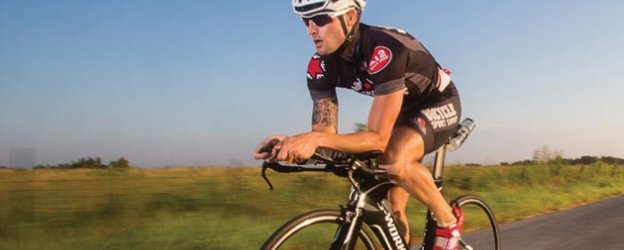How To Lose Weight But Maintain Muscle Mass
25th July 2013

Athletes seeking a healthy performance weight should eat high fiber, low-energy dense food balanced with their training regimen in order to maintain muscle while still burning fat, according to a report published in the Nestle Nutritional Institution Workshop Series. The paper looked at the benefits of teaching athletes how to consume what it termed a low-energy-dense diet, or high-fiber, high-water, but lower-fat foods. It considered too many athletes are pushed into fad diets or try to restrict calorie intake too much in a way that is unhealthy and unsustainable.
Depending on the sport, athletes sometime want to either lose weight without losing lean tissue, or gain weight, mostly lean tissue. This is very difficult to do if caloric intake is restricted dramatically or one tries to lose the weight too fast. It also means athletes don’t have the energy to exercise, or they feel tired and put themselves at risk of injury.
The author, Melinda Manore, a professor of nutrition in the College of Public Health and Human Sciences at Oregon State University, said the overwhelming body of research shows that just counting calories does not work. What does work is a healthy lifestyle that can be maintained, even during breaks or when not in training. She said an athlete’s optimum body weight should include the following criteria:
- weight that minimizes health risks and promotes good eating;
- weight that takes into consideration genetic makeup and family history;
- weight that is appropriate for age and level of physical development, including normal reproductive function in women; and
- weight that can be maintained without constant dieting and restraining food intake.
The paper outlined some strategies that athletes can use to maintain a healthy weight and remain performance-ready. Of chief importance is adopting a low-energy-dense diet, which includes a large amount of fruits, vegetables, whole grains, lean meat, fish and low-fat dairy. Avoid beverages high in sugar, especially fizzy drinks and alcohol.
Just as we recommend at Nutritional Therapy Works, Manore said half of a plate of food should be filled with fruits and veggies and processed food should be avoided. “Always opt for the food over the drink, don’t drink your calories,“ Manore said. “Instead of drinking orange juice, eat an orange. It has more fiber, and fills you up more.”
Other key points:
- Eat breakfast. Eat a breakfast rich with high-fiber whole grains, fruit, high-quality protein such as eggs and low-fat dairy. Skip the processed cereals.
- Get plenty of protein. Most athletes get plenty of protein, but they may not be strategic about making sure to refuel after exercise and spreading their protein intake throughout the day. Depending on the goals, some athletes may need to get as much as 30 percent of their calories from protein, but many get that in one large meal. Spreading that protein out throughout the day is a better strategy; and nuts, beans and legumes are a great source of protein, not just meat.
- Exercise regularly. This may seem obvious for an athlete, but many seasonal athletes can pack on pounds during off-seasons, making it that much harder to get performance-ready.
- Avoid fad diets. Combining severe calorie restriction with intense training can result in metabolic adaptions that actually can make it more difficult to lose weight. Severe weight loss also makes an athlete stressed out and tired, and that is never good for sport.
While the paper is aimed at competitive and recreational athletes, these tips can apply to anyone who wants to change their diet and head in a healthier direction.
Oregon State University. “Athletes need to be careful to monitor diet, weight to maintain muscle mass.” ScienceDaily, 23 Jul. 2013. Web. 25 Jul. 2013.
Categories: Sport & Exercise, Weight Management